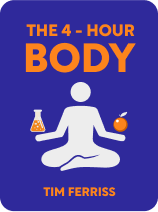

This article is an excerpt from the Shortform book guide to "The 4-Hour Body" by Timothy Ferriss. Shortform has the world's best summaries and analyses of books you should be reading.
Like this article? Sign up for a free trial here .
What are polyphasic sleep cycles? How does an alternate sleep schedule work?
Polyphasic sleep cycles use an alternate sleep schedule than the traditional eight hours. If the sleep pattern that’s usually recommended doesn’t work for you, this might be the answer.
Read more about polyphasic sleep cycles and how they might work for you.
What Is Polyphasic Sleep?
Most would consider staying asleep for eight hours straight a good sleep. However, it’s also possible to feel well-rested by dividing your sleep into chunks, which is called polyphasic sleep cycles. As long as you time your chunks properly, it’s possible to feel fine with only two hours of sleep a night.
So, what is polyphasic sleep and why does it work? Polyphasic sleep works because the most useful phase of sleep is REM, which most people only experience for 1-2 hours a night. The hours of light sleep (6-7, if you’re sleeping eight hours a night) don’t have that much benefit, so if you can force your body to spend every unconscious moment in REM sleep, you can spend less time unconscious. To do this, you can either:
- Make yourself exhausted. When exhausted, the body goes straight into the REM phase.
- Trick your body. If your body thinks you’re only going to get a small amount of sleep, it will enter REM whenever you go to sleep.
Polyphasic Sleep Schedules
There are three common schedules for polyphasic sleep cycles, all of which include the tricks for forcing yourself into REM sleep:
- Siesta. In this method, you take one 20-minute nap during the day and then sleep for six hours starting around midnight.
- Everyman. In this method, you take naps during the day and a chunk of core sleep at night. There are multiple versions of this method:
- Everyman 2: Two 20-minutes naps during the day and 4.5 hours starting around midnight.
- Everyman 3: Three 20-minute naps during the day and 3 hours starting just after midnight.
- Everyman 4: Four to five 20-minutes naps and 1.5 hours starting just before midnight.
- Uberman. In this method, there are six 20-minute naps a day every four hours. It takes two to three weeks to adjust to this schedule.
The more naps you have, the more strictly you must adhere to one of the polyphasic sleep schedules. In the Uberman method, you can’t miss a nap by more than half an hour or oversleep, or you’ll be tired for days.
(Shortform note: For more information on how to get better sleep, read our summary of Matthew Walker’s Why We Sleep.)

———End of Preview———
Like what you just read? Read the rest of the world's best book summary and analysis of Timothy Ferriss's "The 4-Hour Body" at Shortform .
Here's what you'll find in our full The 4-Hour Body summary :
- How to do the least amount you need to do for the results you want
- Why you need a cheat day in your diet
- How to improve everything about your body, including sleep, sex, and longevity






